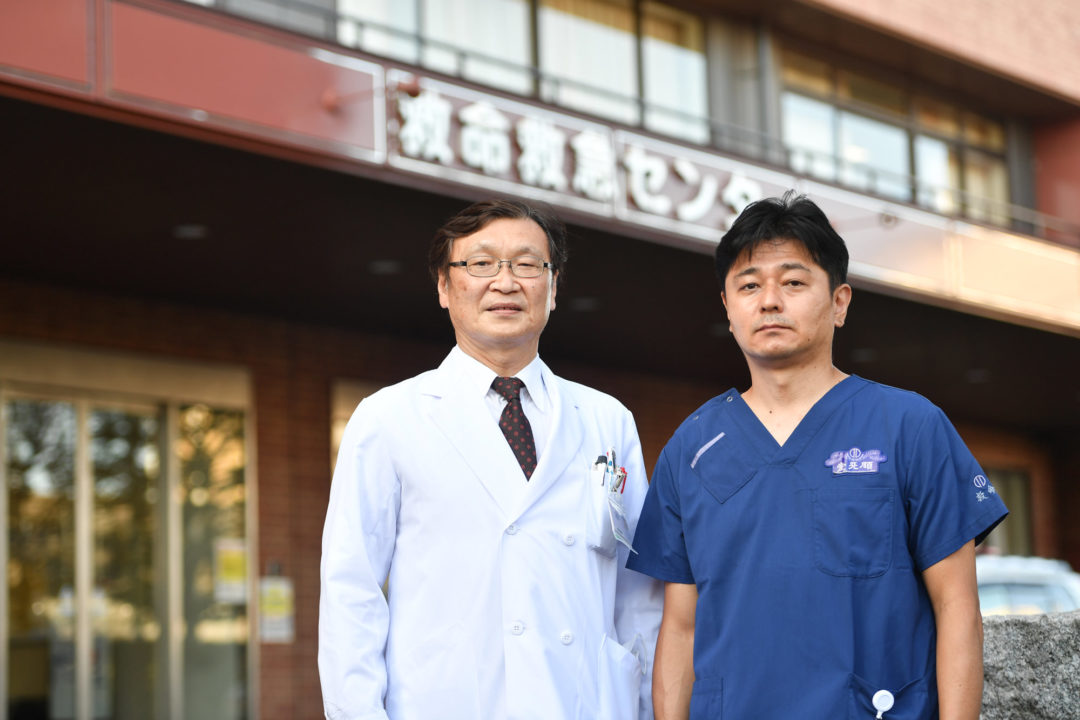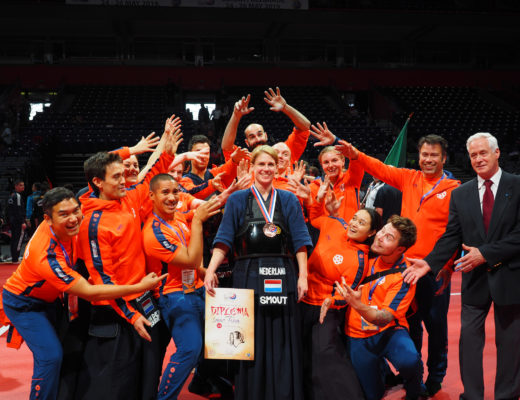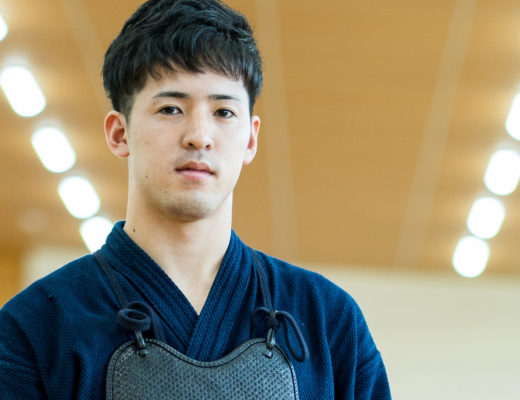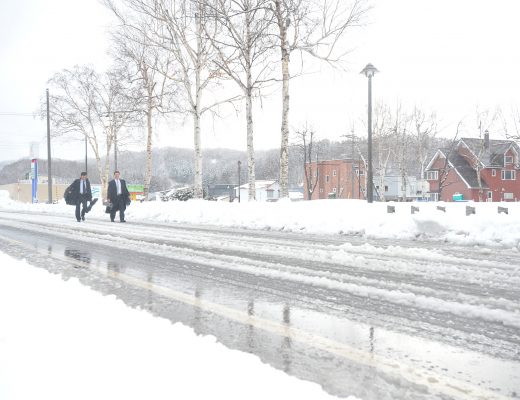2021.1 KENDOJIDAI
The interview was conducted with masks on, and the masks were temporarily removed for the photo.
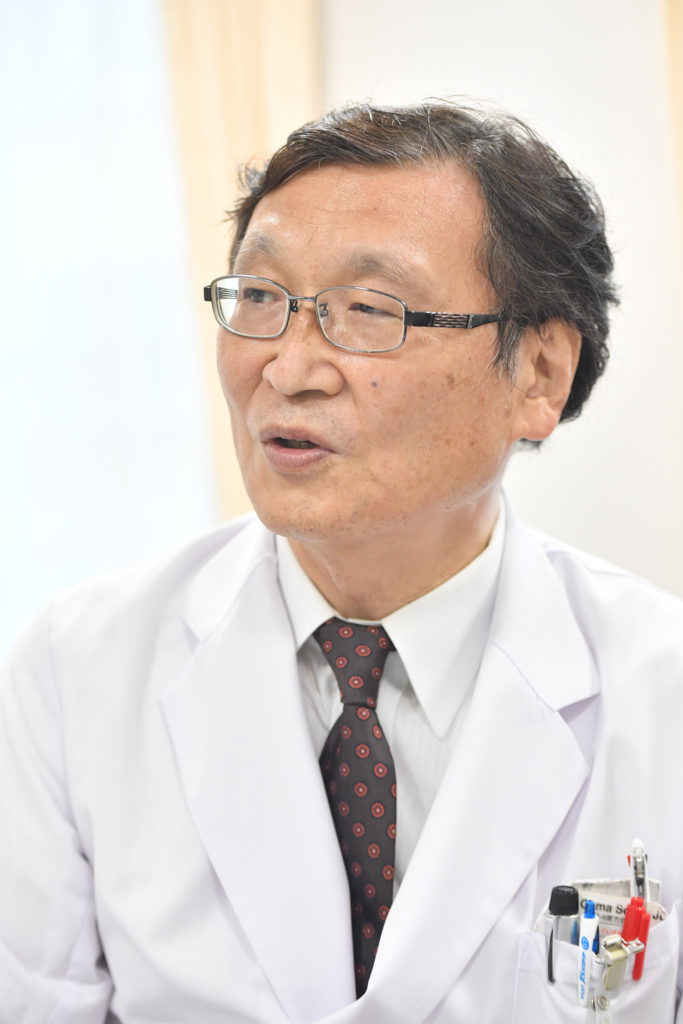
Dr. Hayashi Akito was born in Kirishima City, Kagoshima Prefecture. After graduating from Juntendo University School of Medicine, he worked as an associate professor in the Department of Neurology at the University of Wisconsin, USA, then at the University of Tsukuba, and is currently a professor in the Department of Rehabilitation and in the Department of Neurology in the School of Medicine. He started Kendo in his junior high school days and when he was a medical student, he won the individual and team titles at the Kanto Medical, Dental and Veterinary Kendo Championships and the team title at the All Japan Medical Student Kendo Championship. He is currently practicing after a 20 year break and is 6th Dan in Kendo. Dr. Hayashi is the Secretary General of All Japan Medical Kendo Federation and Chairman of the Medical Committee of the Ibaraki Kendo Federation; sports instructor certified by the Japan Sports Association; member of the medical and scientific staff of the Japanese Olympic Committee.

Dr. Sueyoshi Koichiro was born in Miyazaki Prefecture and graduated from Osaka University School of Medicine. After working at Osaka University Hospital and Harvard University, he is currently an associate professor in the Department of Emergency Medicine. About one-third of the patients admitted to Juntendo University Urayasu Hospital are admitted from the emergency room, where critically ill patients are given intensive care. He started Kendo in the first grade of elementary school and participated in the All Japan Student Kendo Championship when he was a member of the Osaka University Athletic Association Kendo Club. He is currently 7th Dan in Kendo. Member of Shofukan Dojo.
The so-called “second Dojo” is dangerous
Kendo and COVID-19, notes on Keiko resumption between people
– What measures will be necessary with the new way of practicing Kendo in order to resume Keiko with others?
Dr. Hayashi: What is important in the practice of Kendo is to prevent new COVID-19 infections by wearing masks and hand washing. Furthermore, avoid the “3Cs” (3密: Sanmitsu – closed space, crowded places , close-contact) at the individual and societal levels. In addition, if you have a fever or are not feeling well, it is important to take a good rest and not overdo it.
On the other hand, there is no need to be unnecessarily anxious or afraid of COVID-19 infections. Using a Kendo analogy, it is important to know your opponent well and know yourself well. In other words, it’s important to keep your mind clear and stay careful and alert.
For example, even if you think you are taking countermeasures against COVID-19 on a regular basis, you may become lax and have a party with a lot of people and cause a superspreading event. If you understand how you get infected, how to prevent it, and know how to act properly, I believe you can prevent the spread of the COVID-19 for the most part.
The same is true in hospitals: avoid closed spaces, crowded places and close-contact. We are starting to better understand many things about COVID-19 infections. They can be transmitted through droplets, aerosols and close contact, so it’s important to take the right precautions. It is necessary to establish measures to prevent new COVID-19 infections by adopting a new lifestyle and a new way of Keiko.
Dr. Sueyoshi: I had never given much thought to the relationship between Kendo and viral infection until now. Traditional Kendo Keiko involves a large number of people in an enclosed Dojo. When you think about it, the 3Cs conditions that are prone to viral infections are present in Kendo.
In particular, Kendo involves loud vocalizations, which can be critical in the case of viral infections that are spread by droplets. Kendo is a wonderful activity that can be practiced by men and women of all ages, but special attention should be paid to the high percentage of elderly people in Kendo compared to other sports. When the COVID-19 pandemic started, I was very concerned about the elderly practitioners in the Kendo community.
Dr. Hayashi: Persons at risk of serious illness include the elderly, people with underlying diseases (hypertension, chronic kidney disease, chronic respiratory disease, diabetes, heart disease, etc.), and smokers. In young people, the rate of severe disease is lower, but the rate of severe and life-threatening cases is higher in people with underlying diseases. As Sueyoshi Sensei said, there are many elderly people who have practiced Kendo for life. It is important to be vigilant about preventing infections when resuming Kendo, as the elderly are more likely to have underlying diseases and we need to be more careful with them.
It is also important to be considerate of elderly Kenshi who may not have resumed Kendo at this time and are waiting to see how things progress. It is a good idea to communicate with them in a variety of ways to keep in touch with them. In each Dojo, attendees should wear a mask and face-shield; for Keiko participants, measure their temperature, regularly disinfect, pay attention to ventilation, and keep a list of attendees. If you wear a mask that covers your mouth and nose, you will not be treated as a concentrated contact person. It is also important to wear a mask properly. Also, the so-called “second Dojo’ is dangerous. Even if you are taking proper infection prevention measures during training in the Dojo, for the time being it is necessary to strictly refrain from social gatherings at parties and meals, where communication takes place.
– Given the current infection situation, what are the measures against COVID-19 in Kendo from a practicing physician’s point of view?
Dr. Sueyoshi: At the moment, the infection is not under control, and there is no established standard treatment yet, so proper caution is still necessary. If proper infection control measures are taken, COVID-19 infections are not easily contracted. However, when the 3Cs are aligned, the infection can spread quickly. In severe cases, the infection can be life-threatening, so it is necessary to take the proper precautions when resuming Kendo.
Dr. Hayashi: There is still no standard treatment for COVID-19 infections, but there have been advances in symptomatic treatment. On the other hand, there are some patients who have difficulty returning to their functional prognosis and daily lives.
It is important to prevent the spread of infection upon resumption of Kendo, to prevent the elderly from becoming infected, and to prevent young people, who will be responsible for the future of Kendo, from leaving Kendo. As I have discussed above, these steps will be necessary at the individual and Dojo level.
– What about the interpersonal Keiko that has been resumed?
Dr. Sueyoshi: As stated in the guidelines, you must first identify your health risk factors. You need to decide whether to resume practice based on age and underlying disease. You must also consider the risk factors of your family members and others around you, as the infection risk is not just a problem for you. There is no disputing the fact that conventional Kendo is not possible at this point when the virus isn’t under control. It is necessary to follow the guidelines and take adequate measures.
Dr. Hayashi: In Kendo, Kikentai-ichi is essential, but shouting increases the risk of droplet infection. The 3Cs that cause people to crowd together and shout in poorly ventilated areas are likely to occur in Kendo. Therefore, it is necessary to keep the area well ventilated, not too crowded, and not to shout to prevent droplet infection.
First, let’s talk about ventilation. In some cases, fine particulates among the droplets that cause aerosol infections cannot be adequately covered by a mask, so ventilation is essential. It is important to avoid training in basements where adequate ventilation is not available. In most environments where clusters have occurred in the past, they have been in tightly enclosed spaces. Be sure to place ventilation fans, blowers and room ventilation as well.
Next, try to reduce the number of practitioners by dividing practice time into different age groups and by shortening practice time. The new way of Kendo means using masks and shields to prevent droplet infection. As for distance, it is important to keep your social distance and not to shout near each other. As stated in the guidelines of the All Japan Kendo Federation, one of the new guidelines in Kendo is to disengage from Tsubazeriai immediately.
– What about the use of masks and face-shields?
Dr. Sueyoshi: COVID-19 infections are mainly caused by droplet and contact transmission. In Kendo, it is important to know how to prevent droplets from vocalization. As stated in the guidelines, wearing a mask and face-shield is mandatory. Hand washing and disinfection are also effective and must be done thoroughly. Also, re-used masks can become a source of infection if they are handled carelessly, so be careful.
Dr. Hayashi: Of course, if you are not feeling well or have a fever, the most important thing is to take a break from training. Furthermore, in the case of COVID-19, a mask is essential for resuming Kendo as well as daily life. Depending on the type, a mask can adequately cover your mouth and nose and prevent droplets that are released during vocalization. According to the results of a demonstration experiment conducted by the All Japan Kendo Federation, the mask and face-shield worn by the participants were more than 90% effective at preventing droplets larger than 5 micrometers (one one-thousandth of 5 mm) compared to those not wearing them.
However, wearing a mask does not guarantee 100% safety. Even though droplets over 5 micrometers in diameter can be prevented by a mask, and a face-shield can also block droplet dispersal, fine particles (aerosols) smaller than 5 micrometers can slip through the mask and linger for a certain period of time, causing aerosol infection. Incidentally, the size of COVID-19 particles is 0.1 micrometers. Masks do not block 100% of aerosol inhalation, but the rate they let through is quite low. Ventilation is an important measure against fine particles and aerosols that masks cannot prevent.
Also, if your nose is exposed from the mask, you will inhale through your nose without any cover. Even if you are wearing a mask, this will definitely reduce the effectiveness of the mask in preventing infection. Furthermore, if you are wearing a mask with your nose sticking out, it may gradually slip off, and some people may even stick out their mouths. If this happens, it is as if you are not wearing a mask at all. If you are having trouble breathing while wearing a mask, take off your mask and go outside to breathe fresh air.
In the event that someone gets infected, your wearing a tightly fitted mask would not qualify as concentrated contact, but you are more likely to be treated as a close contact if your nose is exposed. Shields, such as eye guards and mouth guards, are also strongly recommended for older adults. They prevent saliva from getting into the eyes and therefore prevent infection.
Thinking of new training methods
Droplet infection protection is essential. Heat stroke prevention is also important
– What should I be careful about wearing masks and face-shields during Keiko?
Dr. Sueyoshi: Currently, wearing a mask and face-shield is mandatory for protection against droplet infection, as per the guidelines of the All Japan Kendo Federation. Masks reduce droplets, but they do not reduce them to zero. Therefore, vocalization in close proximity to each other, such as during Tsubazeriai should be prohibitited. It is necessary to suppress vocalization as much as possible when striking.
Also, if you practice wearing a mask, please be careful to avoid heat stroke. The temperature has been rising in recent years,and therefore it is necessary to review the conventional training methods. Please measure the temperature and humidity in your dojo before training and share information on the risks of heat stroke with your dojo members. You may need to change your training content or rest times accordingly.
In any case, please don’t assume that you can continue the conventional practice as it is. In Kendo, as in the case of the “new normal” we must consider a “new practice style” as well.
Dr. Hayashi: Regarding masks, the N95 mask used in hospitals makes it difficult to breathe even without exercise. Surgical masks (non-woven masks) may make it difficult to breathe during exercise, so you should replace them with Kendo masks.
It is important to be aware of the harmful effects of masks. Wearing a mask also increases the risk of heat stroke and dehydration. Break up your practice into short periods of time and drink water frequently. Leaders should also be aware that forcing practitioners to continue when they cannot breathe can induce arrhythmia in the elderly and panic in the young. Heat acclimation is important for preventing heat stroke. The first symptoms of a heat stroke are muscle cramps as a result of an electrolyte imbalance due to sweating, and dizziness as a result of the widening of blood vessels due to heat which then causes the blood pressure to drop. Even before you experience these sympotoms, do not force yourself to practice and take a break if you feel any change in your health condition, such as lethargy.
In addition, when teaching children, instructors and parents should pay close attention to their children’s facial expressions, as they can be difficult to recognize. It’s a good idea to keep track of the temperature and humidity in the Dojo. Shields tend to fog up easily in high humidity, so it’s also important to try to keep them from fogging to maintain visibility. I have tried about 30 different masks so far. It takes some getting used to practicing with a mask on. Also, masks made of new materials and masks with a shape that takes up space around the mouth have come out, so it is best to choose the mask that suits you best.
– How should the guidelines for Kendo practice be utilized?
Dr. Sueyoshi: In medicine, there are guidelines for each disease. For example, there are guidelines for colon cancer and stomach cancer, and we treat them accordingly. The guidelines are a compact summary of the general policy, but they are abstract and difficult to understand.
The same is true for the All Japan Kendo Federation guidelines, and it is important to read them while applying the content to your own situation. However, in order to understand the guidelines, basic medical knowledge is required, and it is currently very difficult to receive qualified advice. I think it is best to ask for advice from a specialist such as a physician who is a Kendo practitioner.
Dr. Hayashi: As a member of academic society committees for several diseases, I have developed several guidelines. As Dr. Sueyoshi says, the guidelines are only a general framework, and there are many cases in which they are not applicable in practice. Also, treatments that are better than the ones outlined in the guidelines are being discovered, so it is necessary to keep updating the guidelines rather than getting caught in them, and I think the same is true for the guidelines in Kendo. Depending on the situation, it is important to take the guidelines as a reference, and to make practical modifications based on the best information.
Correct knowledge and understanding. A careful reading of the guidelines
– How should we approach basic Keiko participation?
The rest of this article is only available for Kendo Jidai International subscribers!

